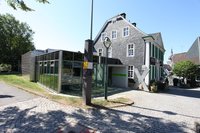Professor Enrico Salvioni aus Perugia schickt Wilhelm Conrad Röntgen lebhaftesten Dank ("con i piu vivi ringraziamenti") auf seiner Visitenkarte.
Zu dieser Zeit war Salvioni Professor für experimentelle Physik an der Universität Perugia und publizierte schon 1896 intensiv zu den X-Strahlen. Er erfand das tragbare Kryptoskop im Februar des gleichen Jahres. Wahrscheinlich war er einer der Empfänger der ersten Veröffentlichung Röntgens und des dazugehörigen Bildersatzes.
en

















